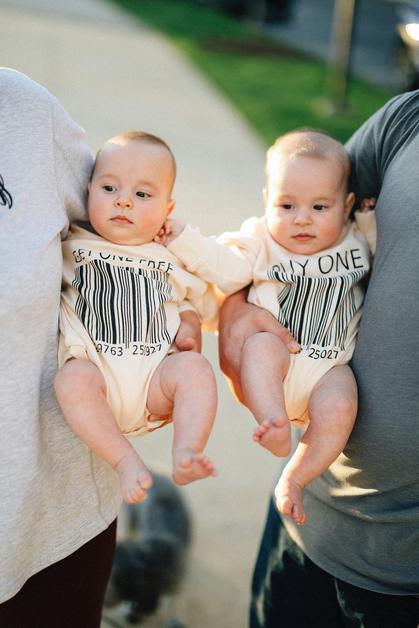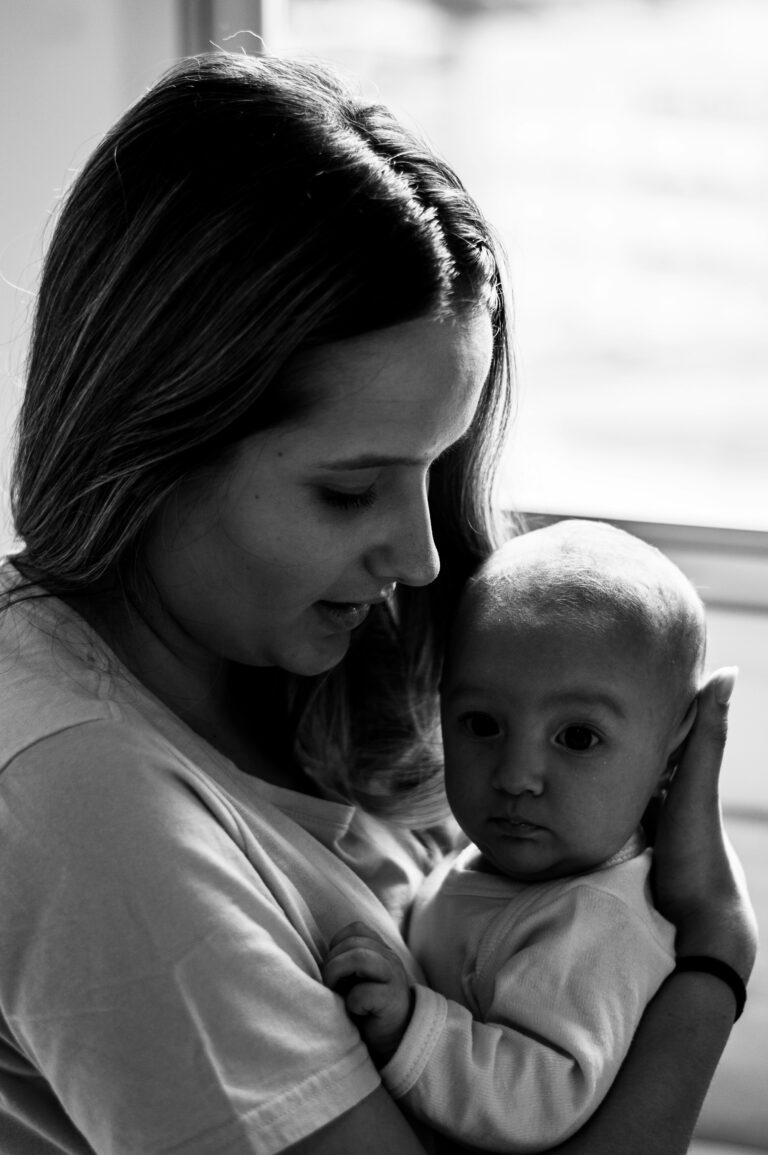Anticipating the arrival of twins can spark a whirlwind of emotions—excitement, anticipation, and, often, a surge of questions that set hearts racing. For parents learning that their pregnancy involves fraternal twins, the mind leaps from science to daily worries: will they look alike, share the same health risks, or grow at the same pace? Maybe you glance at your first ultrasound and wonder what this truly means for your family. Can you raise two individuals without favoring one over the other, or will comparisons creep in? Let’s unpack the landscape of fraternal twins, diving into the science, the uncertainties, the day-to-day dynamics, and the support that allows families to thrive.
What Are Fraternal Twins? Understanding Their Scientific Origins
Fraternal twins, known medically as dizygotic twins, begin with a marvel of biology: during a single cycle, two separate eggs are fertilized by two different sperm. Unlike identical twins who split from the same fertilized egg, fraternal twins each have a unique genetic profile. In fact, their DNA overlap is like that of regular siblings—sharing roughly 50% of their genes. The implication? Dramatic physical differences are entirely possible—one could be tall with curly hair, the other shorter with straight locks. They might even be different sexes, a clear clue to their origin.
What about their prenatal world? Typically, fraternal twins each develop safely in their own amniotic sac with a separate placenta (dichorionic-diamniotic configuration). This comparative independence in the womb lessens certain pregnancy risks—yet introduces unique considerations that specialists monitor closely.
The Genetics and Influences Behind Fraternal Twinning
Have you wondered why some families have more twins than others? The answer spans age, heritage, and occasionally, fate. Higher maternal age, especially past the mid-thirties, brings hormonal fluctuations—particularly an upswing in follicle-stimulating hormone (FSH)—that encourage the release of multiple eggs. Family history on the mother’s side, specifically traits that support hyperovulation, can be influential. Ethnic background adds another layer: certain populations, especially in sub-Saharan Africa, experience notably higher twinning rates.
Fertility treatments have also reshaped the landscape. Assisted reproduction techniques, such as IVF or medications designed to nudge along ovulation, can quickly elevate the probability of a multiple pregnancy. When double ovulation occurs, the outcome can be two embryos, genetically similar as any two siblings, prepared to share their first breaths side by side.
Distinguishing Fraternal Twins from Identical Twins
It’s common for parents—and even healthcare providers at the outset—to puzzle over whether twins are fraternal or identical. Ultrasound scans that spot two distinct placentas usually indicate fraternal twins. If the twins are male and female, that clinches the answer: only fraternal twins can be of different sexes. On rare occasions, only a DNA test will provide assurance, especially if outward features seem eerily similar.
Are the common myths about identical thoughts or synchronised personalities justified? In reality, fraternal twins each follow their own developmental milestones. Differences in temperament, physical ability, or interests should be expected, embraced, and even celebrated. The risk is in comparison—something all parents must consciously steer away from.
Medical and Physiological Realities of Pregnancy with Fraternal Twins
Carrying fraternal twins is not “double trouble” but rather, “double attention.” Pregnancy symptoms are sometimes amplified—heightened fatigue, pronounced nausea, even more rapid uterine growth. Routine prenatal ultrasounds (often done at shorter intervals than during singleton pregnancies) check for independence of sacs and placentas, verifying that each twin is growing well.
Risks—while not a foregone conclusion—are statistically elevated in twin pregnancies. Premature birth occurs more frequently, with close to 60% of twins arriving before 37 weeks. Growth discordance, where one twin is smaller than the other, can surface, especially in later trimesters. Maternal complications such as gestational diabetes, hypertension, and postpartum hemorrhage require specific monitoring strategies. Regular, tailored medical oversight remains non-negotiable—if you have questions about monitoring, your healthcare provider’s role is to explain, adapt, and support, rather than prescribe in the dark.
Choice of birth method is rarely fixed in stone until late in pregnancy. If the first baby is positioned head-down, and there are no clinical obstacles, vaginal birth is possible. Any sign of distress, unusual positions, or emerging health risks points toward a safe, planned cesarean delivery.
Newborn Care and Individual Healthcare for Fraternal Twins
The birth of fraternal twins ushers in a period of heightened observation—closer monitoring in those precious first hours for issues such as prematurity, low birth weight, or feeding challenges. Neonatal teams will frequently assess temperature regulation, feeding ability, and the earliest signs of healthy bonding. If differences in weight or physical resilience are significant, early pediatric interventions or support with feeding plans may be introduced.
Their individuality doesn’t stop with physical features. Health risks, immune responses, even blood types can be distinct. Personalized medical care is absolutely essential—treating each child according to their needs, rather than grouping them solely by twinship.
Supporting Individuality and Development in Fraternal Twins
Parenting fraternal twins means balancing the collective and the personal. While tandem milestones—rolling, sitting, first steps—can occur, it’s entirely typical for one to rush ahead while the other takes a more leisurely route. Respecting these rhythms supports healthy psychomotor development, lowering the stress of unnecessary comparisons.
Want practical tips? Encourage activities that tap into individual interests. You might ask open questions: What does each child gravitate toward? Who prefers building blocks, who loves puzzles, who delights in messy painting? Allowing for separate friendships, hobbies, even classroom placements can nurture independence. Some families opt to keep twins together in school, reinforcing their bond; others see separation fostering confidence and reducing unhelpful rivalry.
At home, routines take on new meaning. Organizing feeding, sleep, and play in a way that accommodates both twins, while offering flexibility for divergent preferences, is key. When setbacks arrive—be it feeding difficulties or slow-to-emerge milestones—gentle support, informed by evidence, makes all the difference.
The Social Dimension: Community, Culture, and Support Networks
The arrival of fraternal twins tends to draw attention and sometimes curiosity, especially if they don’t look like “typical twins.” Public perceptions can swing—sometimes they’re seen as simply siblings, sometimes fascinating for their differences. For some, this reduces the weight of comparison and lets individuality bloom naturally.
Social support for families with multiples is more abundant than ever. Associations like the National Organization of Mothers of Twins Clubs or the Twins and Multiple Births Association offer advice, solidarity, and dedicated resources tailored to life with twins. Peer-to-peer discussions, accessed through online communities, build confidence and resilience for parents navigating twin-specific challenges—be it the logistics of double feeding, managing two sets of school paperwork, or coping with sleep deprivation.
Nutrition, Maternal Health, and Everyday Well-being
The dietary demands of raising fraternal twins begin with pregnancy itself. Expectant and breastfeeding mothers need increased levels of protein, calcium, iron, and folic acid for optimal fetal growth. Monitoring intake, supported by regular consultations with nutrition specialists, ensures both babies get what they need.
After birth, feeding should be responsive—tailored by appetite, growth pattern, and, sometimes, differing tastes. As for the home environment, safety and accessibility remain paramount: think baby-proofing twice, organizing supplies, and forming routines that give space for both togetherness and individual pursuits.
Cultural expectations may shape decisions—some families follow traditions around sleeping arrangements or naming that are centuries old, others carve new paths. The best approach is flexible, adapting as family needs evolve.
Myths and Society: The Longstanding Fascination With Twins
Twins have often been woven into cultural lore, sometimes admired for their “twin bond,” occasionally misunderstood. Modern stories—from literature to film—reflect the diverse possibilities of life with fraternal twins. Some families may find joy or solidarity in sharing their own stories, connecting with the wider world of twins in history and fiction, drawing reassurance and inspiration for the journey ahead.
Key Takeaways
- Fraternal twins develop from two separate eggs and two separate sperm, making them siblings born together but genetically unique—different sexes and distinct personalities are completely possible.
- Most pregnancies involve a separate amniotic sac and placenta for each twin, which reduces some risks but requires specialized prenatal monitoring to detect prematurity, growth delays, or maternal complications.
- Factors increasing the likelihood of fraternal twins include maternal age over 35, family history, certain ethnic backgrounds, and fertility treatments.
- Each child’s health needs, developmental path, and identity will be distinct; parenting choices around school, routines, and interests should support their individuality.
- Parents can connect with dedicated communities and resources for advice and peer support. When in doubt, pediatric and obstetric professionals provide reliable guidance.
- For tailored advice and free child health questionnaires, you can download the Heloa app, a supportive tool to empower families every step of the way.
Questions Parents Ask
Can fraternal twins have different fathers?
Yes, it is possible, though very rare, for fraternal twins to have different fathers—a phenomenon called heteropaternal superfecundation. This can occur if two eggs are released during the same cycle and fertilized by sperm from separate partners within a short timeframe. This situation tends to surprise families, but science explains how it happens naturally and, dans la majorité des cas, both children are simply cherished for who they are.
Do fraternal twins always develop at the same rate?
Not necessarily. Each child has their own rhythm, and it’s perfectly typical for fraternal twins to reach milestones like crawling, walking, or talking at different times. They might grow at different speeds, show varied interests, and achieve independence in their own unique ways. Rassurez-vous, differences in development are part of what makes each child special. If you ever feel unsure, sharing your observations with a health professional can offer personalized reassurance and advice.










